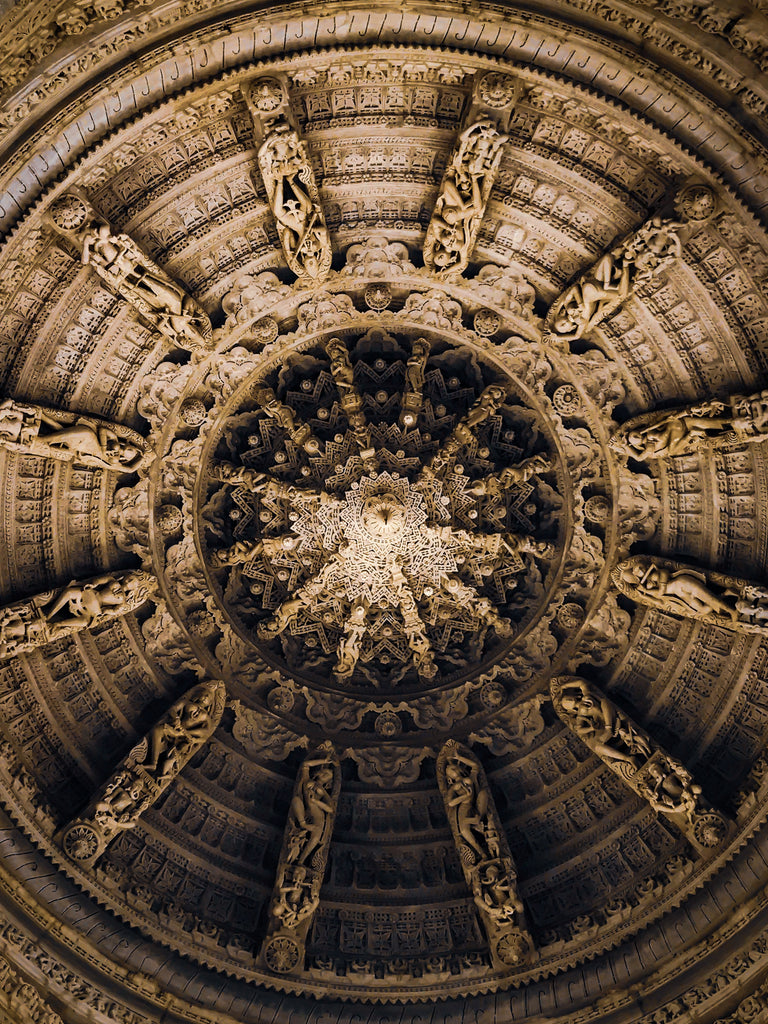A sage sketches intricate patterns on aged palm leaves, guided not just by artistic intuition, but by an intimate knowledge of the cosmos and the energies that dance within it. These ancient architects are not just builders; but cosmic choreographers, crafting structures that mirrored the very fabric of the universe.
Fast forward to the present, where the echoes of that celestial symphony still resonate in the temples that stand as a testament to ancient science.
The journey of temple design thus began not with blueprints and measurements but with a tale, a timeless anecdote whispered through generations.
As we delve into the captivating realm of temple design, it's not just about architectural marvels but an exploration of the very essence of the cosmos itself. The science behind it, embedded in the ancient scriptures known as the Shilpa Shastras and the Vastu Shastras, unveils a narrative that goes beyond stone and mortar—a narrative that echoes the cosmic dance of creation.
Vastu Shastra: Cosmic Harmony in Architecture
- Cosmic Orientation: According to Vastu Shastras, the orientation of a temple is of utmost importance. The main entrance, typically facing the north east, opens up your space to positive cosmic energies. The placement of the deity within the inner sanctum is also carefully considered, aligning with specific directions associated with various deities.
- Mandala Design: The Vastu Shastras often prescribe the use of the mandala, a geometric design symbolizing the cosmos, as a template for temple layout. The most common mandala is the square or rectangle, divided into smaller squares, each representing a deity or aspect of divinity. The alignment and proportions of these squares are meticulously defined to maintain cosmic harmony.
- Agama Shastras: The Agama Shastras, a subset of Vastu Shastras, provide specific guidelines for temple rituals, ceremonies, and the consecration of deities. These texts detail the proportions of the sanctum, the materials to be used, and the rituals to infuse divine energy into the temple.
- Sacred Geometry: Vastu Shastras emphasize the use of sacred geometry in temple construction. Specific ratios and proportions are prescribed to maintain balance and harmony. For instance, the ratio of the height of the sanctum to its width is carefully calculated to ensure aesthetic appeal and spiritual significance.
Shilpa Shastra: Artistic Expression in Stone
- Sculpture and Iconography: Shilpa Shastras delve into the artistic aspects of temple design, focusing on sculpture and iconography. Intricate carvings adorn temple walls, depicting mythological stories, deities, and celestial beings. The sculptures are not merely decorative; they serve a spiritual purpose by narrating divine narratives and inspiring devotion.
- Temple Components: From the towering Vimana (temple tower) to the intricate Mandapa (pavilion), each element has a specific purpose. The Garbhagriha (sanctum sanctorum) is where the main deity resides, and the intricate carving of the Shikhara atop the Vimana symbolizes the ascent from the material to the spiritual realm.
- Symbolism in Architecture: Every aspect of a temple, from its layout to the carvings, is laden with symbolism. The temple is seen as a microcosm reflecting the macrocosm, and its various parts symbolize cosmic elements. For example, the lotus motif represents purity, while the Kalasha (pot-like structure) atop the temple symbolizes abundance and divinity.
- Sthapatya Veda: Shilpa Shastras encompass Sthapatya Veda, which focuses on the science of architecture. It outlines the mathematical and geometrical principles behind temple design, ensuring precision in measurements and proportions. The alignment of the temple with celestial bodies and cardinal directions is meticulously calculated to enhance its spiritual significance.
The Coming Together of Vastu and Shilpa Shastras
While Vastu Shastras focus on the cosmic and spiritual aspects of temple design, Shilpa Shastras bring these principles to life through artistic expression. The synergy between these two streams of knowledge is evident in the construction of temples, where the physical structure aligns with cosmic energies, and intricate carvings convey profound spiritual teachings.
- Rituals and Architecture: The Vastu Shastras prescribe rituals for consecrating the temple site and invoking divine blessings. These rituals are complemented by the artistic expressions detailed in the Shilpa Shastras. The alignment of sculptures, the placement of deities, and the use of sacred symbols all contribute to the overall spiritual ambiance of the temple.
- Aesthetics and Spirituality: The Shilpa Shastras emphasize aesthetics in temple design. Beauty is not seen as mere ornamentation but as a reflection of divine harmony. The intricate carvings and sculptures are not only visually appealing but also serve as a medium to convey spiritual truths, fostering a sense of reverence and awe among the devotees.
- Harmony with Nature: Both Vastu and Shilpa Shastras highlight the importance of aligning temples with the natural elements. The integration of water bodies, gardens, and courtyards within temple complexes reflects a deep understanding of the interconnectedness between nature and spirituality.
How Our Temples Align With Sacred Texts
Shwet seamlessly intertwines the ancient wisdom of the Shilpa Shastras and Vastu Shastras with the dynamic pulse of the modern world. In this ever-evolving landscape, these age-old principles serve as the heartbeat of our creations, infusing every aspect with a divine rhythm that transforms the home into a reservoir of potent energy.
In fact, our logo, a beautiful white peacock, expresses this. Its gaze is set to the north east, contemplating the Vastu of the temple, while its feet are placed inside the auspicious chhokhat. The lamp-like ‘t’ symbolizes both the flame of the law and the lamps integral to puja ritual.
Our commitment to timeless philosophy is not confined to the past; it thrives vibrantly in the present. While our devotional items are crafted with meticulous hand-carving, the contemporary spirit finds expression in the details. Technology takes center stage during the planning phase, where the marriage of traditional craftsmanship and cutting-edge tools unfolds. Through the artistry of sketching, 3D modeling, and AutoCAD drafting software, we ensure that each creation aligns precisely with the revered historic standards.
Adhering to these ancient guidelines becomes our compass, guiding us to perfection at every stage of the creative process. Witness the seamless glide of drawers, a testament to the pursuit of grace, while their generous capacity eliminates the need for unnecessary storage. The surface area, with its profound depth, becomes a sacred canvas where deities find their rightful place with ease. In this meticulous journey, refinement becomes second nature—an innate outcome of honoring the wisdom that has withstood the test of time.

















